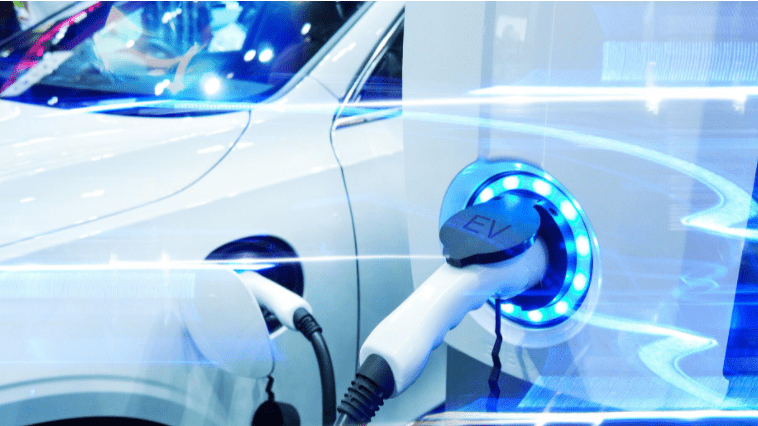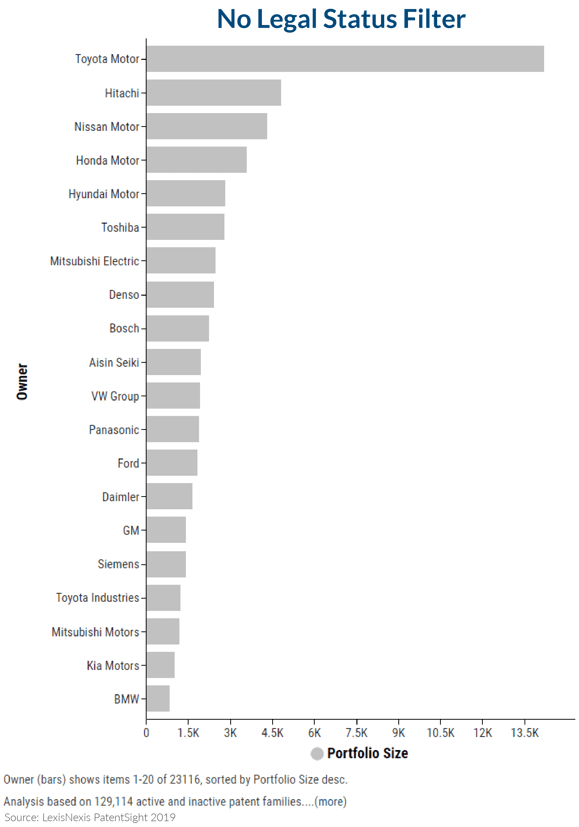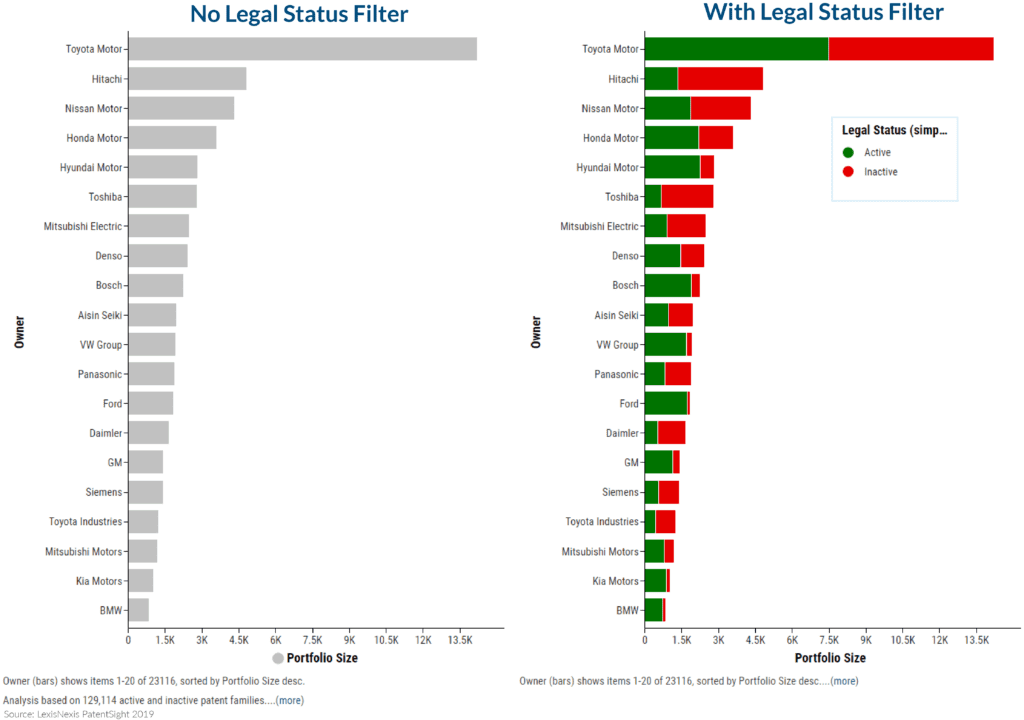e-Mobility – Why is Knowing the Legal Status of Patents Important?

Sarbani Chattopadhyah
August 30, 2019
Having already seen a bird’s eye view of the technology field of e-Mobility and having understood why accurate ownership information is important when conducting patent analytics, we now want to show you how precise and up-to-date legal status information of the patents being analysed is important to get a transparent view of any competitive technology landscape. In this blog post, we use LexisNexis® PatentSight® to compare the same Top 20 companies from the previous posts in this series, only this time we consider the legal status of the patents owned by them.
Why should you care about accurate legal status information?
When conducting patent analyses, simply looking at the number of patent families owned by a company, although provides a general outlook of a company’s innovation capabilities, does not completely portray the effective protection that a company aims for in a specific technology. For this, it is imperative that you are working with accurate legal status information of the patents under consideration. For those of you who are unfamiliar with the term legal status, it refers to a patent’s state of being legally active/inactive. Legally inactive patents are not enforceable so they have less or at times no value to the company owning them.
Legal status information is, thus, extremely relevant in patent analytics, since a constructive analysis of a firm’s currently protected technology can be conducted only with this information at hand. In the picture below, the graph shows the Top 20 companies that own patents protecting technologies related to e-Mobility. This is all the information that has traditionally been used by IP departments and R&D decision-makers. What this picture does not show, however, is whether all the patents owned by these companies are currently active and being maintained or not. In the following paragraphs we will explain how this information only shows you a part of the picture and how with our accurate legal status information, you get to see the full, clear picture of the state of innovation protection in this technology field.

The effect of accurate legal status information
According to our initial analysis, using traditional (quantity only) metrics, Toyota Motors leads the race with more than 12,500 patent families, as seen in chart on the left in the picture below. This is, by far, the greatest number of patents owned by a single company in this technology. From the remaining top players, Toyota is followed by Hitachi, Nissan, Honda, Hyundai, Toshiba and so on. According to traditional IP management techniques, Hitachi would seem to come in at second in ranking when comparing the volume of patents owned. It all seems well and fine until we bring in the legal status of the patents owned into question and shine a light on these patents using our filter to separate between ‘active’ and ‘inactive’ patents.

Applying our legal status filter to all the patents currently owned, by these Top 20 patent owners in the technology field of e-Mobility, differentiates their portfolio into ‘active’ and ‘inactive’ categories. We now can see how the companies compare to each other with respect to active patents owned by them in this technology. And this gives us a true picture of each company’s ranking, when looking at the number of active patents protecting this technology. In e-Mobility technologies, we can see that Hitachi who was in the second position when considering all patents owned, is pushed to number 10 and Hyundai who was earlier in the 5th position has now been promoted to the 2nd spot. Effectively the entire ranking system has been rearranged, except for the giant, Toyota, who still maintained its position at 1st place with about 7500 active patents. Using the export function, it is easily possible for us to export this information into an Excel file for further analysis.
Superior data quality and accurate metrics are what sets us apart and this is visible in this simple example where a competitive analysis using a traditional approach would have generated a completely different picture and distorted the decisions made based on it.
Access all of the articles in our e-mobility series:
- e-Mobility – Watch Out Traditional OEM’s!
- e-Mobility Technology – Who Owns the Strongest Patent Portfolio?
- e-Mobility Technology – Who’s Making It vs. Who’s Buying It?
- e-Mobility Technology – How to Predict the Portfolio of Your Competition
- e-Mobility Technology – a Final Look at the Top Patent Owners
Learn more about PatentSight.
About the author: Dr. Sarbani Chattopadhyay
As a consultant, Sarbani assists clients in using PatentSight in the most optimal way, so that they get insights about patents, about their own portfolio, and portfolios of their competitors, and technologies they are working with, as well as which other technologies are being influenced by their inventions.
